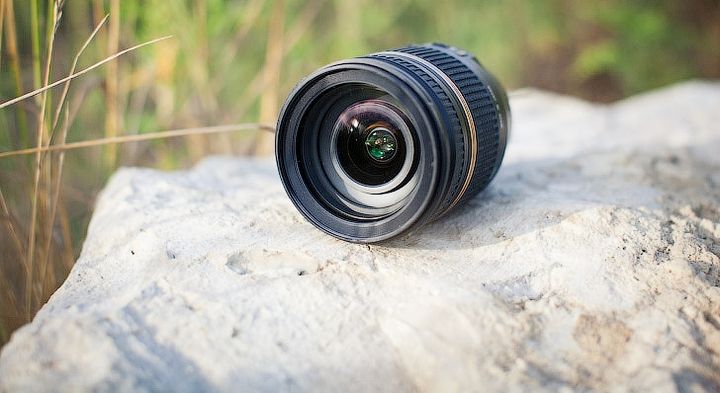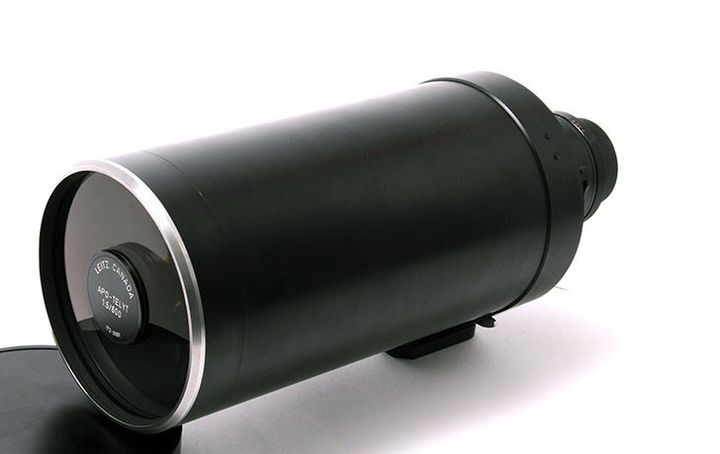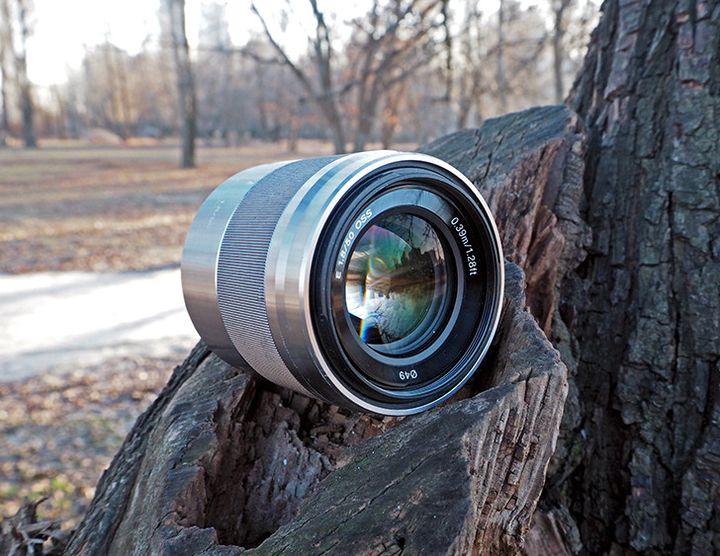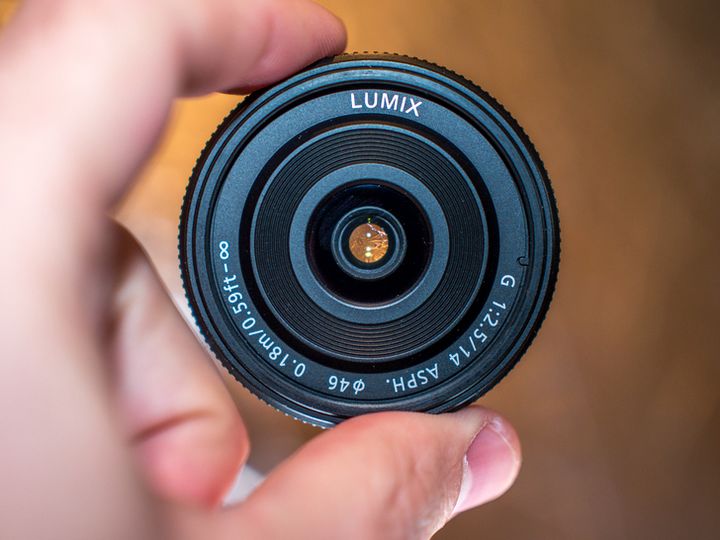Sooner or later, every owner of a DSLR with kit lens dark, like Tamron lenses 18-55mm F3.5-5.6 understands that it this is not enough for realizing the potential of the camera and your own personal creative and want something more. Many go through the purchase of low-cost large-aperture fixation, for example, Tamron lenses 50mm F1.8. But what if you want a little more light-gathering power, but sacrifice flexibility zoom is not ready yet? Then you start to look at Zuma 17-55mm F2.8 and grustneete, learning about the value of $ 1000 +.
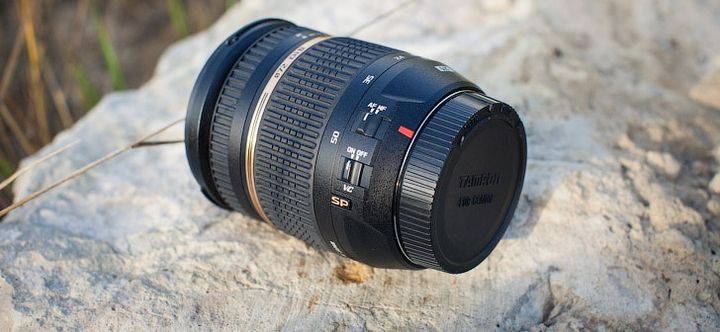
The company has long been known Tamron lenses arsenal relatively inexpensive lenses for many bayonets with good optics and assembly (see our reviews Tamron VC 24-70mm F2.8 , F2.8 70-200mm VC , 90mm F2.8 VC ). We were hit on the test Tamron 17-50mm F2.8 VC, that with a price tag below $ 400 breaks into pieces in terms of price / quality of the lenses similar to A-brands. Let’s see what it was.
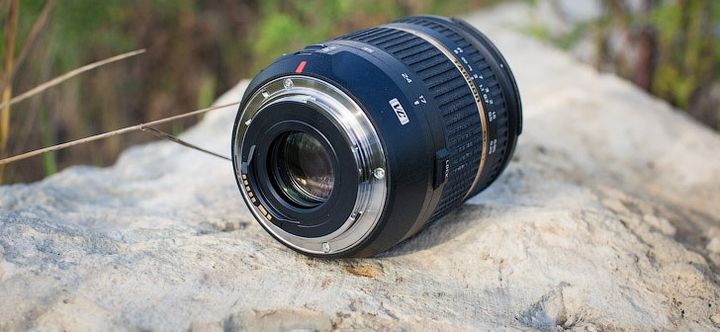
On sale is an old version of Tamron lenses 17-50mm F2.8 without a stabilizer and a new prefix with VC (Vibration Compensation). Read a separate article on how to decipher the markings on the Tamron lenses. The difference of $ 100 between them is due to not only the advent of optical stabilization, but also a new body design, as well as other optical circuit.Tamron lenses is exclusively designed for cameras with APS-C sensors, such as Canon 1200D , 100D , 650D , 700D , 70D , 7D Mark II , Nikon D3300, D5300, D7100. With full frame to use it will not work.
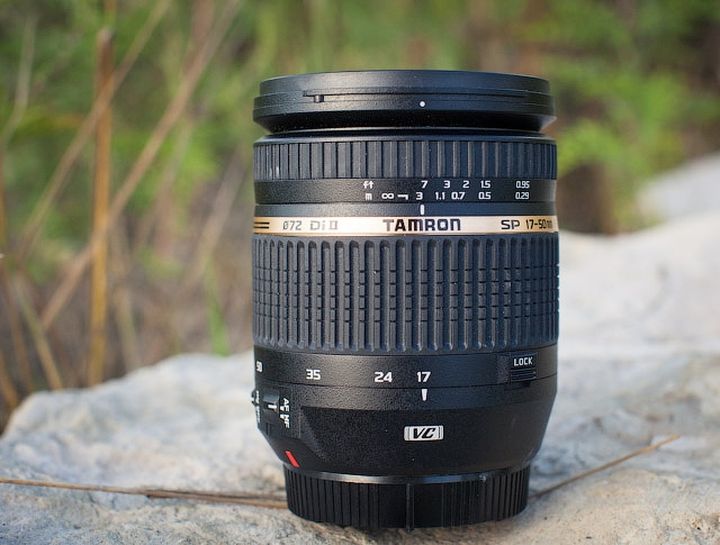
Basis Tamron lenses metal, used top quality matte plastic that does not linger your fingerprints. Zoom ring and focus are covered with large rubber bands Serif, something resembling the tracks of the tank. This makes it easy to turn their hands are wet and even in winter gloves. Zoom ring three times thicker than the focus. Although it is closer to the bayonet, but at such a distance that there is always convenient to use. During the zoom Tamron lenses trunk significantly pushed forward. This gives cause for concern because of its performance in terms of dust in the air or rain. Although in general assembly and operation of all mechanical controls are very good. To prevent accidental loosening of the design and vylezanija trunk lens in the bag / backpack when carrying on the housing provides the locking lever in the extreme wide angle at around 17 mm. By the way, if you omit the lens front Tamron lenses down, even unlocked the trunk will not get out, unlike some other lenses with such a design. The ring itself is spinning smoothly across the entire range. When shooting movies, you can do smooth departures / arrivals on tripod if prilovchilis.
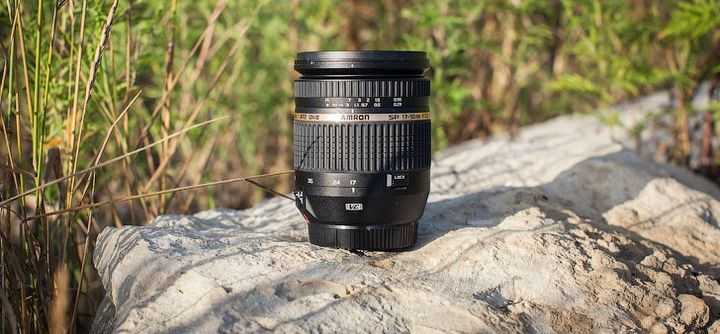
Focus ring turns with auto focus as opposed to the newer glasses like Tamron lenses 24-70mm F2.8 VC. To this we must first get used to, when some finger rests on it and push the shutter button halfway. Over time, this does not cause any discomfort. Another detail of the ring, it is his very slow speed, only ~ 50 degrees. If you use only autofocus for taking pictures, you then anyway. But Videographer may face certain problems precise Focusing on the display even during the recording. But when transferring the focus from the foreground to the distant and vice versa, it is even playing into the hands. After all, with great speed ring is sometimes difficult in one smooth movement to focus on another subject. The Tamron lenses incorporates a traditional motor focus and not modern ultrasound. Due to this, the speed of focus is not the fastest in the class. Although in most circumstances it is enough. Owners budget cameras Nikon, such as D3200 , D3300, D5200, D5300 without a screwdriver – do not worry with their devices autofocus will work in full. Proved bothersome squeaking sound, which is published by the motor when focusing. It may well be annoying, especially in a quiet environment. Silent shooting will not work.
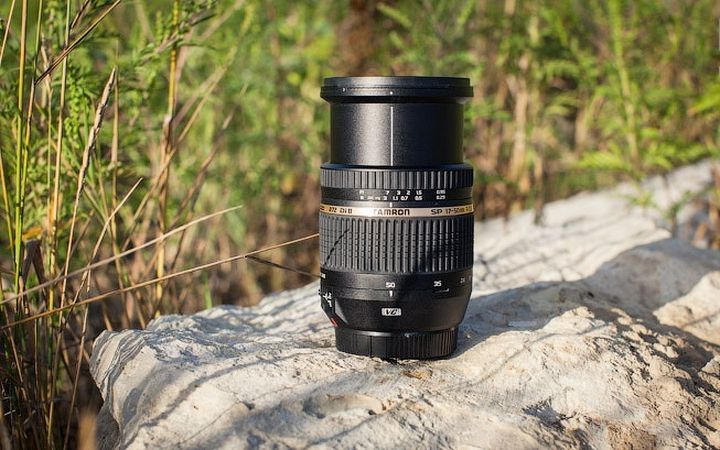
7-blade diaphragm, with rounded edges. Blur circles are rather correct, although with too sharp edges, as for me. Minimum focusing distance – 29 cm, so that in some way the Tamron lenses can be replaced moderate makrik. Dimensions – 80 mm in diameter and 95 mm in length. Weight – 570 grams. Comes with a plastic petal lens hood. It can always be worn with the lens wearing backwards.
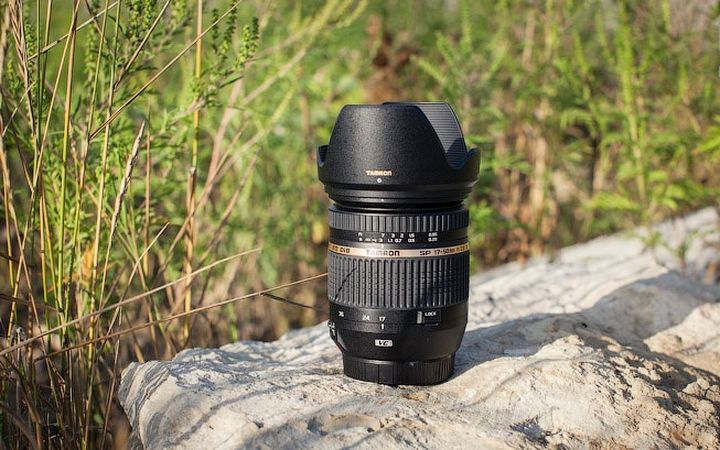
Optical scheme consists of 19 elements in 14 groups, of which three aspherical elements, two LD (Low Dispersion), two XR (Extra Refractive). All these special items affect the final image – minimize optical defects, increase mikrokontrast and overall detail. As for the distortion, it is quite pronounced at the focal length of 17 mm. Since this disease can be controlled in two ways – to include a correction in the camera (if it is supported) when shooting in JPEG, or use the built-in presets in Adobe Camera Raw (in Lightroom or Photoshop). One click and distortions disappear. Then sync setting to other photos in the series. On a range of 24 – 50 mm distortions is almost not visible.

Since it kropnutyh lens, then it should be fairly strong level of vignetting (darkening of the edges of the frame) on the aperture. It is At f / 2.8 at all focal lengths on the edges of the frame decrease exposure reaches the whole stage. To overcome the problem in two ways – close the aperture at least a step – to f / 4, or follow the same steps as mentioned just above about distortion. In fact, when shooting portraits by 50 mm at the most open aperture it can play even on hand to increase the focus on the face and slightly darken all around. “But what about the scenery, you shoot at wide angle?” – You ask. And all of them anyway, no one takes on the open apertures.
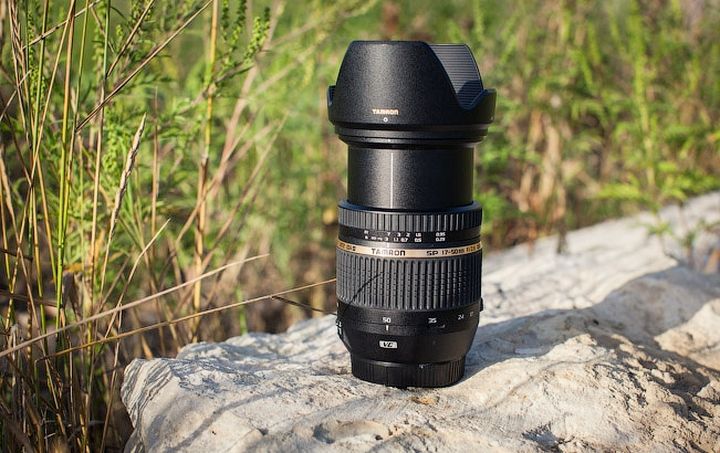
Chromatic aberrations are controlled surprisingly well at all apertures. You can hardly see them in everyday life. The only exception – the focal length of 17 mm. Here they are quite noticeable. With that, the option to cover the aperture does not help. If the same strain of colored halos around contrasting objects, then use the appropriate tool in the same Camera Raw. One click on a colored halo pipette and it will disappear.
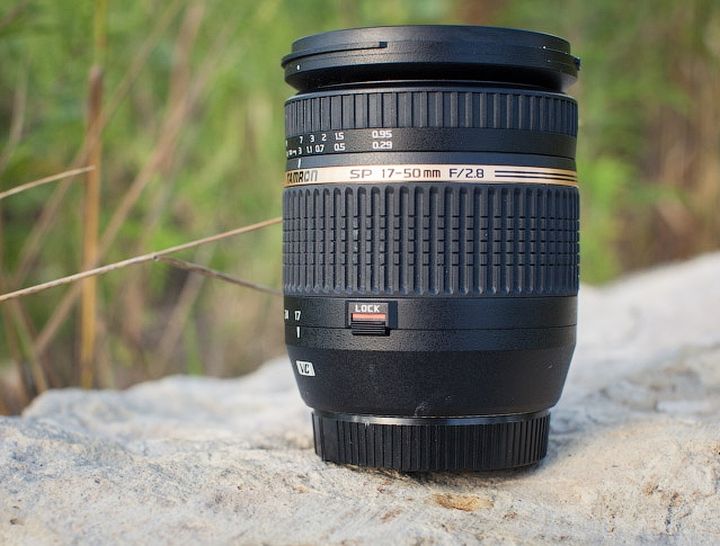
Over the field eloquently tell table below. Its data is taken from the site photozone.de and interpreted for a better perception, given that for the maximum possible value of 100 is accepted.
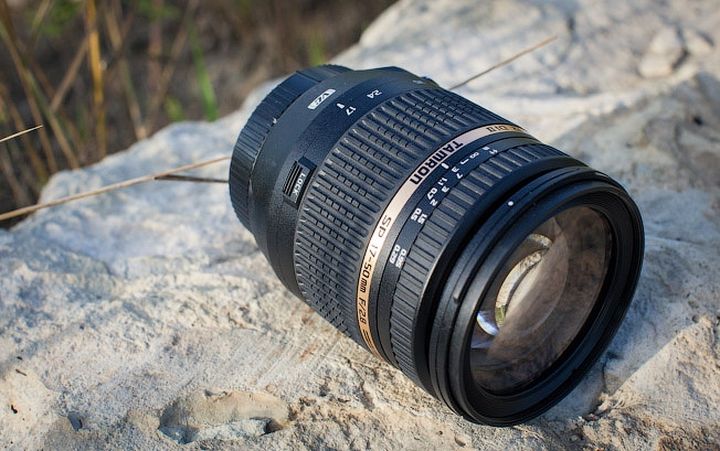
As you can see, at the very aperture can be safely removed at any focal length. Although the 50 mm figures are slightly worse, but the detail is still missing. Along the edges of the frame the situation is slightly worse. At f / 4 image is aligned, especially felt in the range of 35 – 50 mm. This is exactly what a compromise aperture, where the sharpness is good and blur the background can be pretty good. At f / 5.6 detail is maximized at all focal. If you want the highest quality, while always put F5.6. Starting from f / 8 comes into play effects of diffraction and sharpness gradually falls. Although not as significant as it could be.
Liked Tamron lenses AF SP 17-50mm :
- Sharpness on the aperture at all focal lengths
- Maximum detail, if the “cover up”
- The Image Stabilizer
- The quality of materials
- Cost
- Versatile range of focal lengths
- Weight and dimensions
- Minimum chromatic aberration on F2.8
- Moderate vignetting at F2.8
- Fast autofocus
Did not like Tamron lenses AF SP 17-50mm :
- Squeaking sound when auto focus
- Average sharpness of the aperture on the edges of the frame
- Checking out the trunk of the lens
- Pretty strong distoriya on the widest angle
Summary – Tamron lenses AF SP 17-50mm
Tamron lenses 17-50mm F2.8 VC – one of the most balanced zoom lenses can possibly imagine. Given the cost of less than $ 400, I can safely recommend this lens as a practice of photography with a small budget and amateur photographers, which grew out of its package of lenses.
Read another very interesting article about alternative energy of the Sun, water and air.

